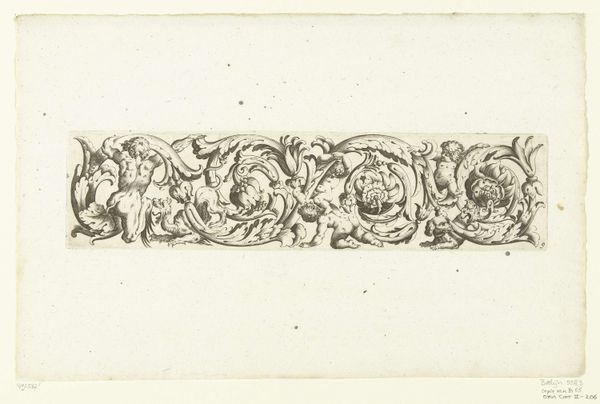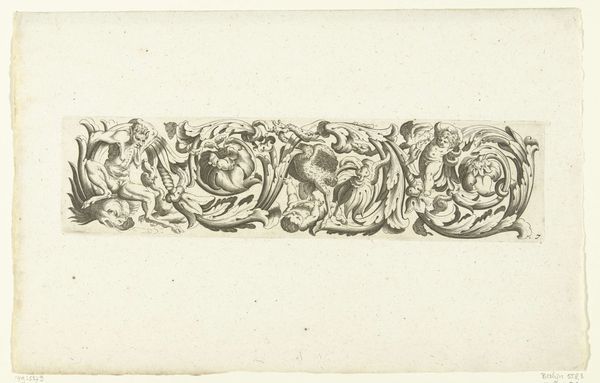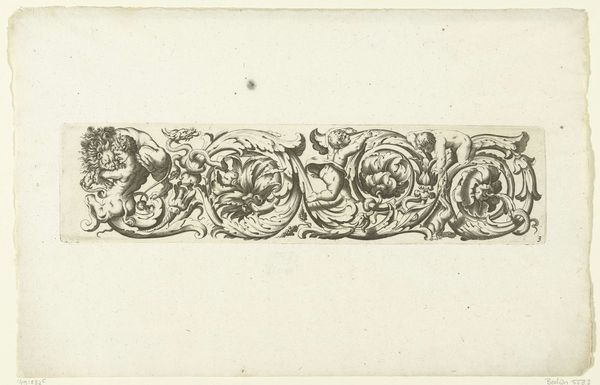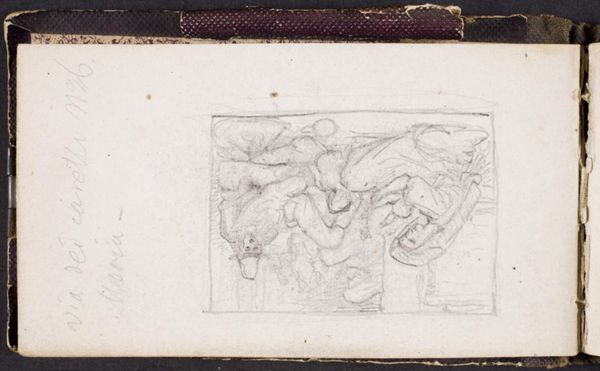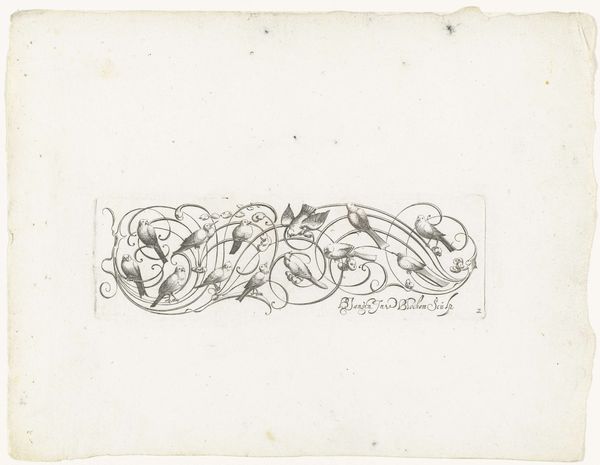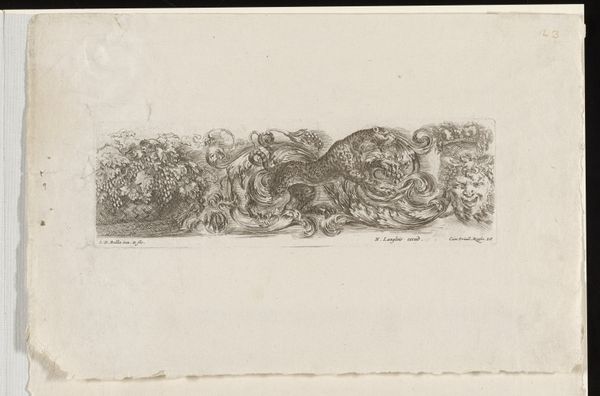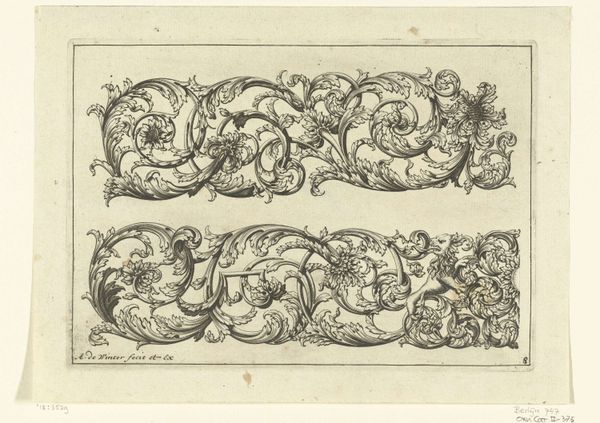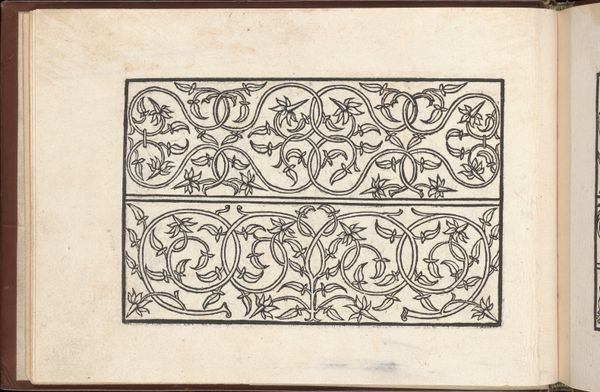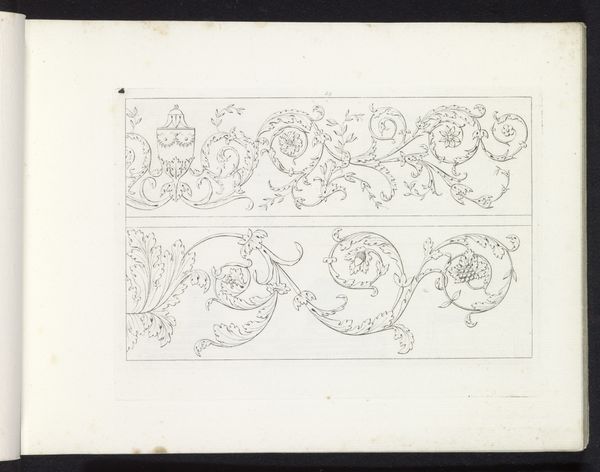
print, engraving
#
allegory
#
baroque
# print
#
old engraving style
#
figuration
#
engraving
Dimensions: height 67 mm, width 274 mm
Copyright: Rijks Museum: Open Domain
This print, whose maker is now unknown, depicts a leafy tendril with flowers and a multi-headed monster at its center. The image seems to have been conceived as a decorative frieze, and it typifies a key aspect of artistic production, then and now. The art market thrives on such repeatable images that can be made quickly and sold widely. We can imagine that this print was produced in Europe in the 16th or 17th century. The popularity of the grotesque style, mixing human, animal, and plant forms, exploded at this time. The rediscovery of ancient Roman art encouraged a revival of its motifs. In particular, artists looked to the Domus Aurea, Emperor Nero’s extravagant palace, with its fanciful painted walls. These kinds of designs could then be used to decorate elite residences across Europe. To better understand this print, we could look to pattern books, architectural treatises, and inventories of decorative arts. This would allow us to understand the social function of such designs and the cultural values they embodied.
Comments
No comments
Be the first to comment and join the conversation on the ultimate creative platform.
